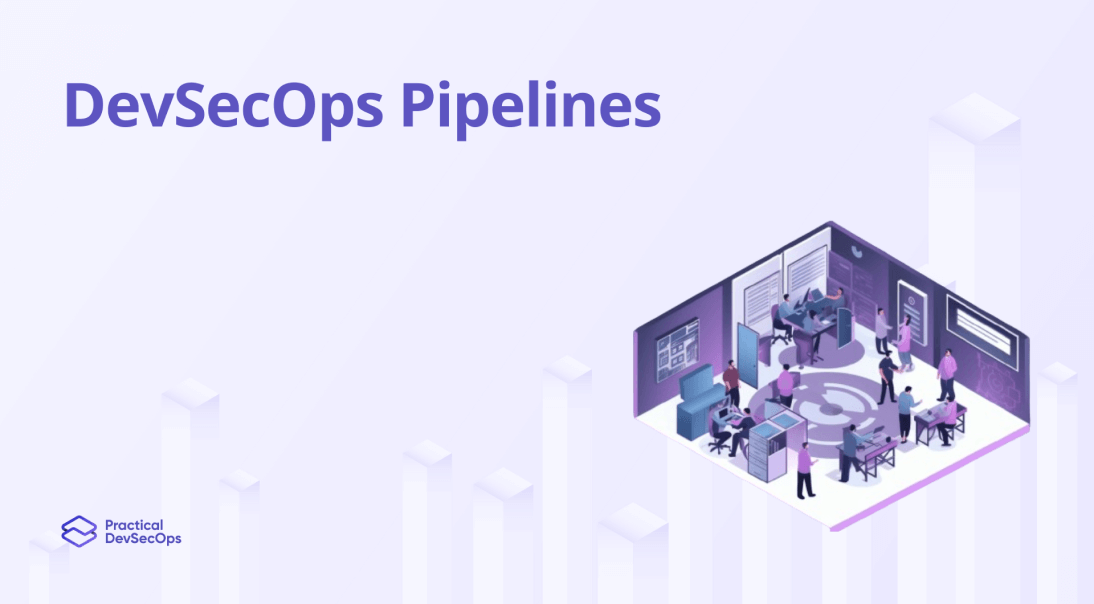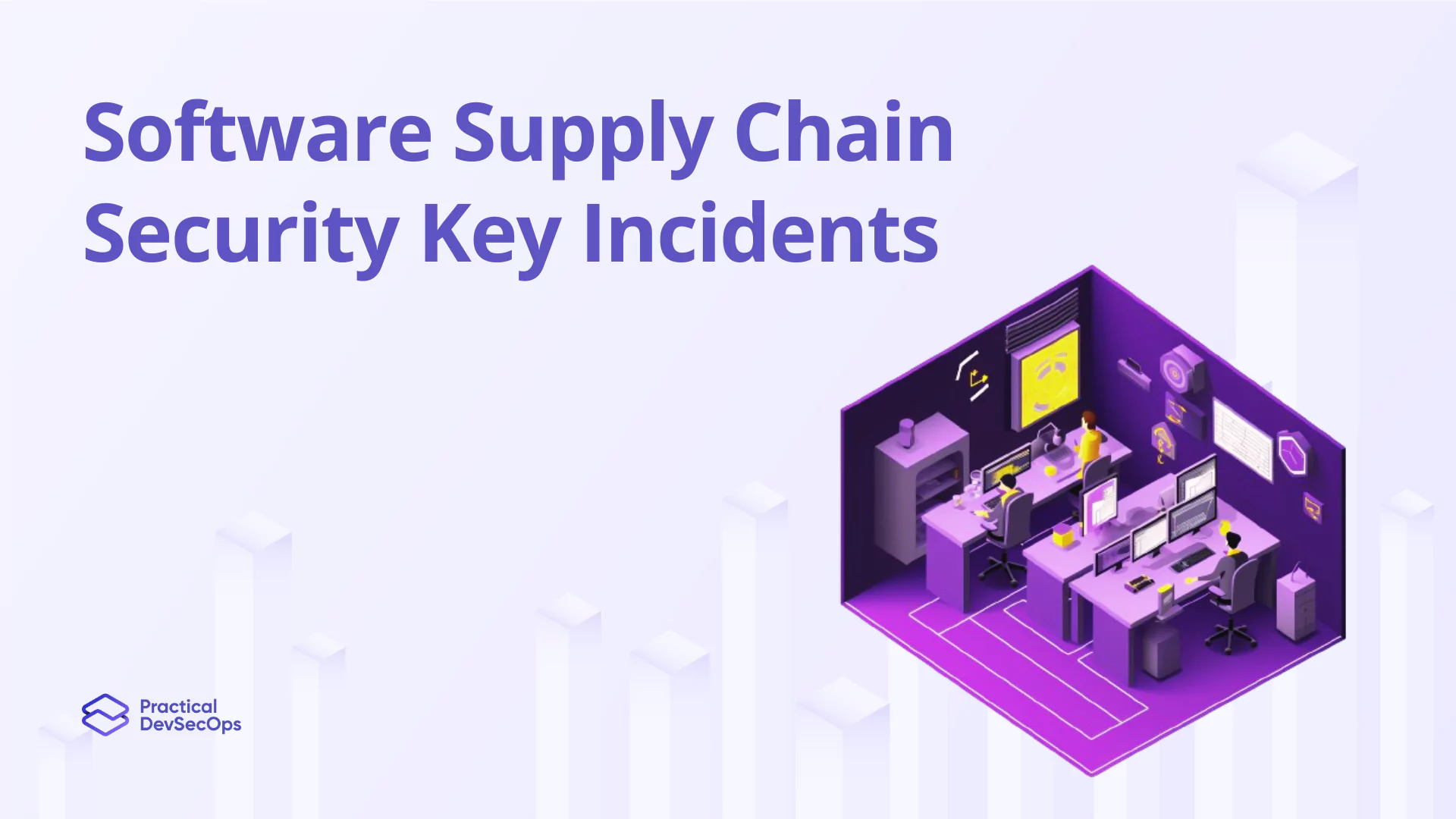In the world of software development, DevSecOps has emerged as an essential practice for integrating security into the entire development process. A key aspect of DevSecOps is the implementation of secure pipelines, also known as DevSecOps pipelines. In this article, we will explore what DevSecOps pipelines are, their significance in enhancing security, and how they contribute to a robust and resilient development process.
What is DevSecOps Pipelines?
In a nutshell, DevSecOps pipelines are automated workflows that incorporate security practices throughout the development lifecycle. These pipelines integrate security controls, testing, and monitoring at every stage, ensuring that security is not an afterthought but an inherent part of the development process.
Why DevSecOps Pipelines are Important?
DevSecOps pipelines play a critical role in enhancing security in the development process. By integrating security early on and automating security practices, organizations can achieve the following benefits:
- Shift-left security: DevSecOps pipelines enable the early identification and remediation of vulnerabilities. By integrating security into the pipeline from the start, developers can address security issues in the development phase itself, reducing the potential impact and cost of fixing security flaws later.
- Continuous security validation: DevSecOps pipelines automate security testing and validation at every stage of the development process. Automated security tools can scan code, configurations, and dependencies, ensuring that security controls are in place and vulnerabilities are identified promptly.
- Consistent security controls: DevSecOps pipelines enforce consistent security controls across the development pipeline. With predefined security checks and practices incorporated into the pipeline, organizations can ensure that security standards and best practices are consistently applied throughout the development process, reducing the risk of insecure code or configurations.
- Improved collaboration: DevSecOps pipelines promote collaboration between development, security, and operations teams. By integrating security directly into the development process, these pipelines break down silos and foster communication and cooperation between teams. This collaboration results in a better understanding of security requirements, efficient issue resolution, and improved overall security posture.
- Faster and more secure deployments: DevSecOps pipelines enable the continuous delivery and deployment of secure applications. By automating security testing and validation, organizations can speed up the release process while ensuring the security of the deployed applications. This fosters agility and reduces the time between development and deployment, ultimately benefiting end-users.
Secure DevSecOps Pipelines
Secure your DevSecOps pipelines by encrypting data flows, implementing multi-factor authentication, and adhering to least privilege principles. These measures protect against threats and ensure only authorized changes make it through the pipeline.
DevSecOps Security Integration
Enhance pipeline resilience by integrating real-time threat detection and automated response systems. These technologies dynamically adjust security measures based on ongoing threat analysis, ensuring proactive defense mechanisms.
DevSecOps Pipeline Automation Tools
Utilize tools like Jenkins, GitLab CI/CD, and CircleCI, equipped with security plugins to automate security tasks. Configure these tools to enforce security best practices, ensuring every stage of the pipeline remains secure.
DevSecOps CI/CD
Leverage CI/CD for security by automatically deploying security patches, conducting container security scans during CI, and ensuring compliance with security policies before deployment. This continuous approach minimizes vulnerabilities in delivered applications.
DevSecOps Collaboration
Foster effective collaboration with tools like Slack for communication, JIRA for issue tracking, and shared dashboards for monitoring security metrics. This integration enhances team synergy and improves security response times.
DevSecOps Pipeline Security Testing Tools
Integrate tools such as SonarQube, OWASP ZAP, and Gauntlt into your DevSecOps pipelines. These tools perform automated security checks, including static and dynamic analysis, and security testing as code, bolstering pipeline security at every phase.
Also Read, Best DevSecOps Tools
How to Build a DevSecOps Pipeline?
Build a DevSecOps pipeline by integrating security tools and practices into each stage of your existing CI/CD pipeline. Include automated security scans, such as SAST, DAST, and IAST, enforce code reviews, and ensure configuration management. Utilize container scanning and infrastructure as code (IaC) security tools to automate security checks and maintain compliance throughout the development lifecycle.
Common Components of DevSecOps Pipelines
DevSecOps pipelines typically consist of the following components:
1. Source code management (SCM):
Utilizing version control systems to manage and track changes to source code.
2. Continuous Integration (CI):
Automatically integrating code changes into a shared repository, followed by automated build and testing processes.
3. Continuous Delivery (CD):
Automating the delivery of code changes to a staging or production environment, including deployment and infrastructure provisioning.
Also Read, DevSecOps vs CI/CD
4. Automated Security Testing:
Integrating security testing tools and techniques into the pipeline, such as static code analysis, vulnerability scanning, and penetration testing.
Also Read, Threat Modeling vs Penetration Testing
5. Configuration Management:
Automating the configuration and management of infrastructure components, ensuring secure and consistent configurations across environments.
Also Read, How to Implement Effective DevSecOps Teams
6. Orchestration and Automation:
Employing automation tools to streamline and manage the execution of various pipeline stages and security controls.
Also Read more about DevSecOps Automation
7. Monitoring and Incident Response:
Incorporating monitoring solutions to detect security incidents and enable rapid incident response and remediation.
Also Read, Best Books on DevSecOps
Best Practices for Implementing DevSecOps Pipelines
Integrate Security Early: Incorporate security at the start of the development cycle to identify vulnerabilities early.
Automation: Utilize tools for automated testing, code analysis, and security scanning to ensure consistent and efficient security checks.
Continuous Integration and Deployment (CI/CD): Establish CI/CD pipelines to streamline development, testing, and deployment processes, integrating security as a core component.
Secure Coding Practices: Educate and train developers on secure coding standards and practices to reduce vulnerabilities.
Regular Security Assessments: Conduct periodic security audits, penetration testing, and threat modeling to continuously improve security posture.
Collaboration and Communication: Foster a culture where development, operations, and security teams work closely together to achieve common goals.
Challenges and Solutions in DevSecOps Pipelines
Cultural Shifts: Address resistance to change by demonstrating the value of integrated security and fostering a culture of shared responsibility.
Tool Integration: Overcome integration complexities by choosing compatible tools that seamlessly fit into the existing tech stack and DevSecOps workflows.
Compliance and Regulation: Navigate compliance challenges by implementing automated compliance checks and maintaining thorough documentation.
Scaling Issues: Manage scaling by adopting scalable security tools and practices that grow with the development environment and workload.
Skill Gaps: Close the skill gap through continuous training, workshops, and hiring of cross-functional team members.
Future Trends and Evolution of DevSecOps Pipelines
Artificial Intelligence and Machine Learning: Leverage AI/ML for predictive analysis, anomaly detection, and automating routine security tasks.
Increased Use of Cloud-Native Technologies: Adaptation to cloud-native architectures, like Kubernetes and serverless, which affect how security is implemented in pipelines.
DevSecOps as a Standard Practice: DevSecOps becoming the norm, with a growing emphasis on integrating security into every phase of the software development lifecycle.
Enhanced Focus on Supply Chain Security: Increased attention on securing the software supply chain through better management of open-source dependencies, container security, and end-to-end encryption.
Conclusion
DevSecOps pipelines are a fundamental component of the DevSecOps philosophy, enabling organizations to integrate security into the development process seamlessly. By automating security controls, testing, and monitoring throughout the pipeline, DevSecOps pipelines enhance security, facilitate collaboration, and enable faster and more secure application deployments. Embracing DevSecOps pipelines ensures that security is not an afterthought but an integral part of the development lifecycle, enabling organizations to build robust and resilient software applications.
Interested in upskilling your team in DevSecOps?
Practical DevSecOps offers an excellent Certified DevSecOps Professional (CDP) course with hands-on training through browser-based labs, 24/7 instructor support, and the best learning resources to upskill in DevSecOps skills.
Start your team’s journey mastering DevSecOps today with Practical DevSecOps!
Most Frequently Asked Questions
What are the key benefits of implementing DevSecOps pipelines?
DevSecOps pipelines enhance security, streamline processes, and ensure faster deployment times. They reduce the costs associated with late-stage vulnerability fixes and foster better collaboration across development, security, and operations teams.
How do DevSecOps pipelines enhance security in software development?
DevSecOps pipelines integrate security early and throughout the software development life cycle, allowing for early detection and remediation of vulnerabilities, thereby reducing potential exploits in production environments.
What tools are commonly used in DevSecOps pipelines?
Popular tools include Jenkins for continuous integration, Docker for containerization, Ansible for configuration management, and SonarQube for continuous inspection of code quality.
How do you integrate security testing into DevSecOps pipelines?
Security testing is integrated by embedding automated tools like static and dynamic application security testing (SAST/DAST) and software composition analysis (SCA) at multiple stages of the development process.
What are the common challenges faced when implementing DevSecOps pipelines?
Key challenges include cultural shifts, tool integration complexity, maintaining compliance with regulations, scaling security practices, and addressing the skills gap within teams.
How can organizations ensure continuous security validation in DevSecOps pipelines?
Organizations can ensure continuous security validation by automating security checks, performing regular security audits, and using real-time monitoring tools to track security metrics and respond to threats swiftly.
What role does automation play in DevSecOps pipelines?
Automation in DevSecOps pipelines streamlines workflows, ensures consistent application of security policies, and reduces human error. It enables faster feedback and remediation, enhancing overall security posture.
How do DevSecOps pipelines promote collaboration between teams?
DevSecOps pipelines break down silos by integrating tools and practices that foster communication and collaboration between development, operations, and security teams, leading to more informed decision-making and enhanced security measures.
What are the best practices for automating security in DevSecOps pipelines?
Implement automated security scans and controls early in the development cycle, use policy as code to enforce security standards, and continuously update and refine automation tools to adapt to new threats.
How do DevSecOps pipelines contribute to faster and more secure deployments?
DevSecOps pipelines facilitate the continuous integration and delivery of secure software by automating security testing and compliance checks, which speeds up the development process and ensures that security is built into the product from the start.
What are the phases of DevSecOps?
The phases of DevSecOps include planning, coding, building, testing, releasing, deploying, operating, and monitoring. Security practices are integrated into each phase to ensure continuous security assessment and improvement, enabling teams to identify and address security issues early and frequently.
What is a DevSecOps Framework?
A DevSecOps framework is a structured approach that integrates security seamlessly into the DevOps process. It encompasses tools, practices, and cultural philosophies that promote collaboration between development, operations, and security teams to automate security processes and ensure continuous security assessment across the software development lifecycle.
What are the Advantages of DevSecOps Pipelines?
DevSecOps pipelines enhance security, reduce vulnerabilities, and speed up deployment cycles. They enable early detection and remediation of security issues, foster collaboration between teams, improve compliance with security standards, and ultimately lead to the development of more secure and reliable software.
How to Build a Secure CI/CD Pipeline using DevSecOps?
To build a secure CI/CD pipeline using DevSecOps, integrate automated security testing tools at each stage. Use pre-commit hooks for static code analysis, include dynamic application security testing in the testing phase, and apply security configurations in deployment scripts. Ensure all changes are reviewed and audited, and use real-time monitoring to detect and respond to security incidents post-deployment.
Also read, Why DevSecOps is a Good Career Option?






0 Comments